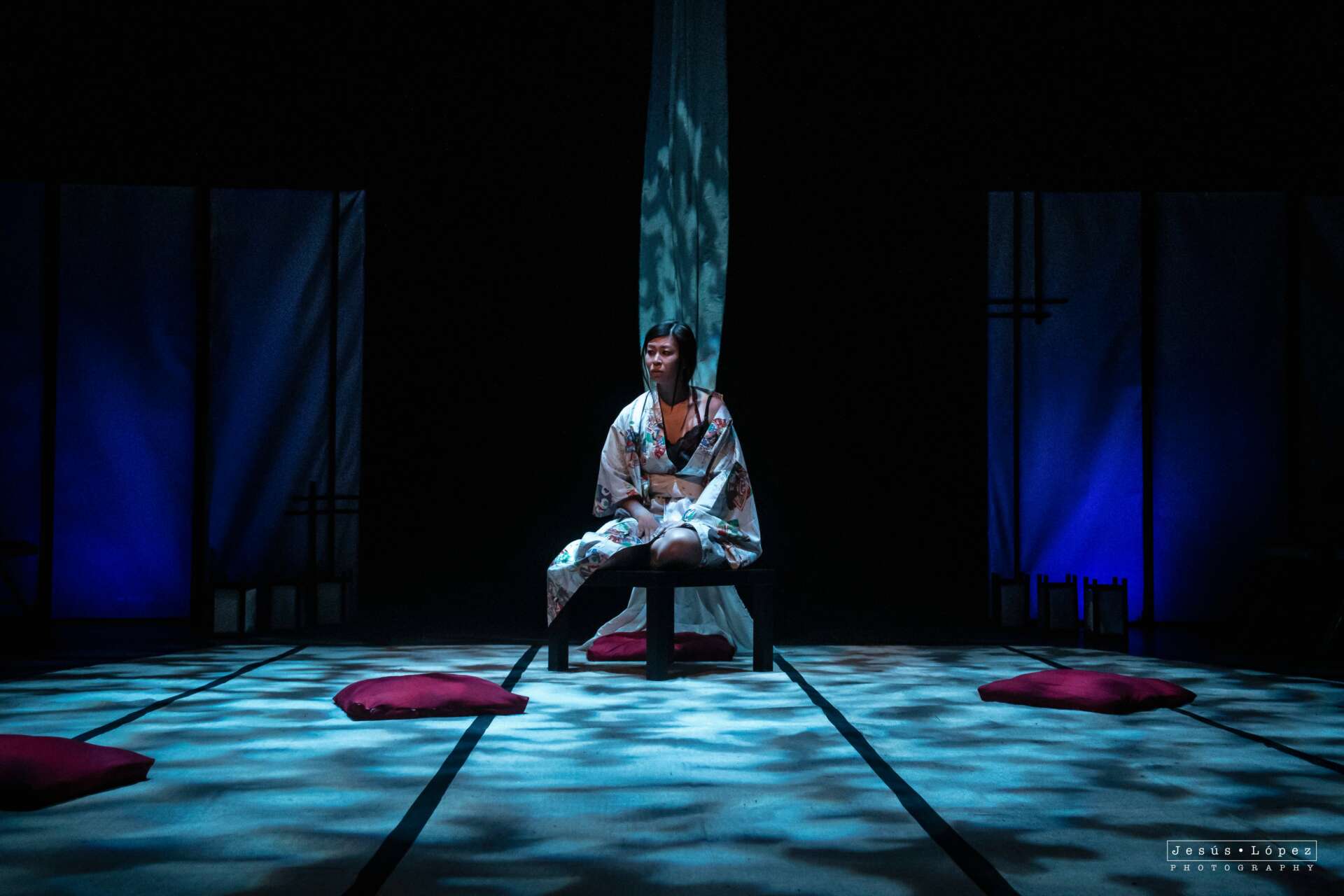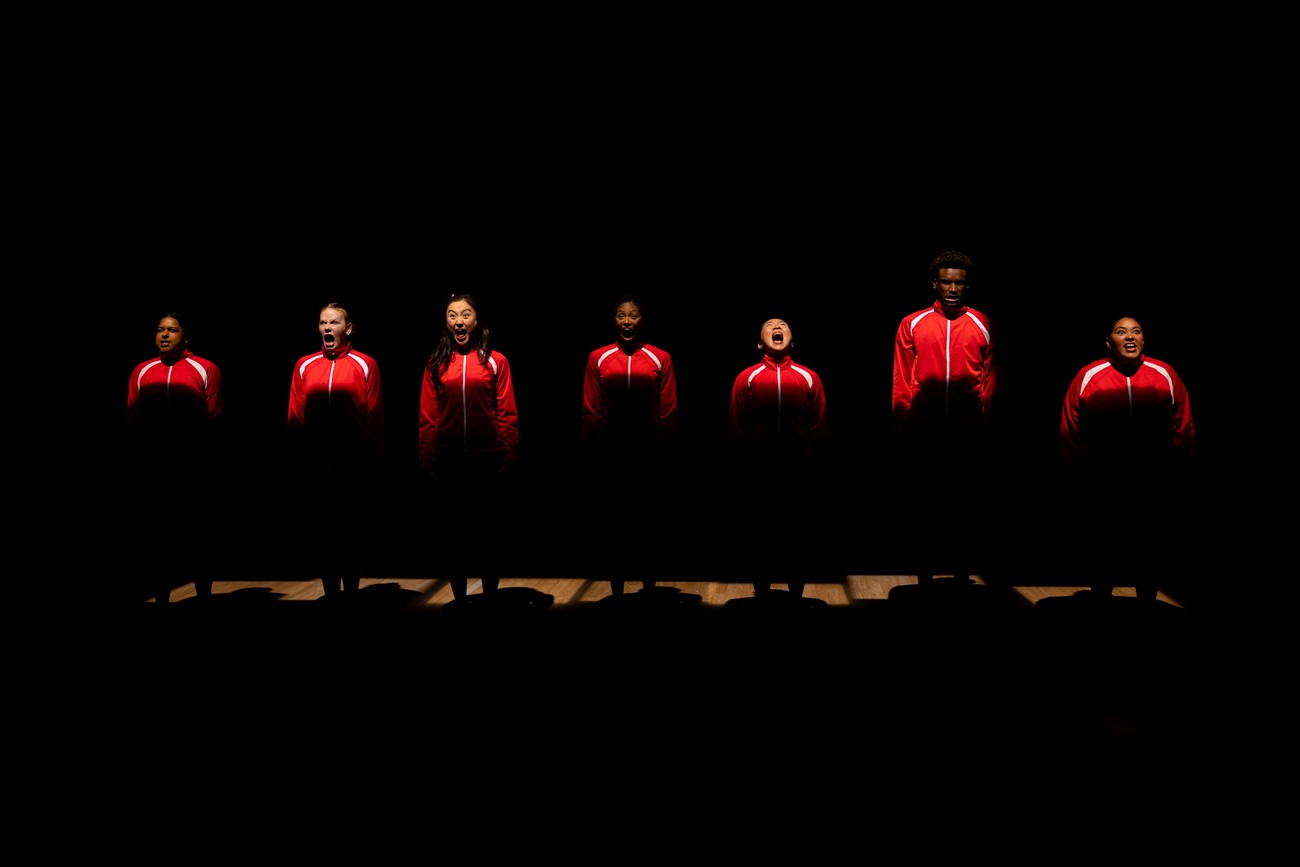We recently connected with Shelby Thach and have shared our conversation below.
Shelby, appreciate you joining us today. What’s been the most meaningful project you’ve worked on?
One of my favorite plays that I’ve ever designed was a production of Tea by Velina Hasu Houston in my fourth year at UC Irvine. The play follows the story of five Japanese women who marry American soldiers during WWII. As the play progresses, we get to see how the women cope with assimilating to American culture and the struggles they face doing so.
It was my first time designing with a full creative team and first time designing a play about an aspect of the Asian-American immigrant experience. What made the show so special to me was that not only was the cast made up of entirely Asian-American women, but our director and entire design team was as well. From the beginning of the process, it was amazing to see how in sync we all were in terms of the story we were trying to tell. Our shared experiences with these characters allowed us to collaborate on a deeper level and it seemed like we were always on the same page with what the aesthetic of the show should be.
This experience made me realize the importance of not only having the proper representation of a story onstage, but backstage as well, and is something that I’ve carried with me through future projects. Many of my most fulfilling projects have been about stories that I’ve directly connected to, which in turn, fuels my love for my craft.


As always, we appreciate you sharing your insights and we’ve got a few more questions for you, but before we get to all of that can you take a minute to introduce yourself and give our readers some of your back background and context?
My name is Shelby Thach and I’m a theatrical lighting designer from Southern California.
My lighting design journey began in my first year of college at UC Irvine. I started off as part of the electrics crew, loading in shows that the graduate students designed. I remember seeing all of the paperwork for the first time – light plots, channel hookups, instrument schedules, etc. and wondering what all the information on it meant. In my quest to decipher all of the symbols and vocabulary, I took my first course in lighting design that year. Throughout the rest of my time at UCI, I continued to work as an electrician, programmer, lighting assistant, and eventually, a lighting designer.
Leaving UCI, I felt like I needed more training, and pursued an MFA program at UC San Diego. At UCSD, I learned more about collaborating with larger teams of people; how to get my ideas across both creatively, with my directors and fellow designers, and technically, to the electricians who are loading in my shows. Since graduating, I have been a recipient of the 2023 Hemsley Lighting Internship and have been freelancing as a designer and assistant around Southern California.
Throughout my years of working in theater, I’ve found a passion in telling stories that I can personally relate to, especially as a woman and POC. When I start new projects, my design process often begins with reading a script and finding things in them that relate to my own life and experiences. When I know exactly how a character feels, I can translate those emotions to something visual on stage.

Looking back, are there any resources you wish you knew about earlier in your creative journey?
As an early career designer, I love being in the room with other designers and watching them work. There’s so much to be gained from just observing – how they interpret the mood of a scene, how they collaborate with others on their team, and how their workflow makes their design process faster and easier.
Sometimes, getting into that room is as simple as sending an email to the designer and asking if you can visit a tech rehearsal. I’ve found that many of the lighting designers I’ve come across are always happy to have visitors and will even take the time to answer your questions, whether it be about their work or for career advice in general. I’ve even been fortunate enough to assist these designers or have my name passed down for other jobs just by getting to know them this way.
It always seems scary at first because it might feel like you’re bothering them, but more often than not, they feel flattered that someone is reaching out to them!

What do you find most rewarding about being a creative?
The most rewarding part of what I do is getting to share my work with others. For most of my design process, it feels like I’m working inside a bubble. From pre-production to technical rehearsals, I’m sharing my ideas with the same handful of people – the other creative team members on the production. My favorite part is when we finally get to that first preview or to opening night and I can invite my friends and family to watch what I’ve been working on for the past few weeks. It’s great to hear people’s thoughts and interpretations of the story, and it’s always fun to give them the inside scoop of how we made things happen!


Contact Info:
- Website: shelbythach.com
- Instagram: @shelbythachlighting
Image Credits
Jesus Lopez Rich Soublet Kristine Nguyen Russell Chow


